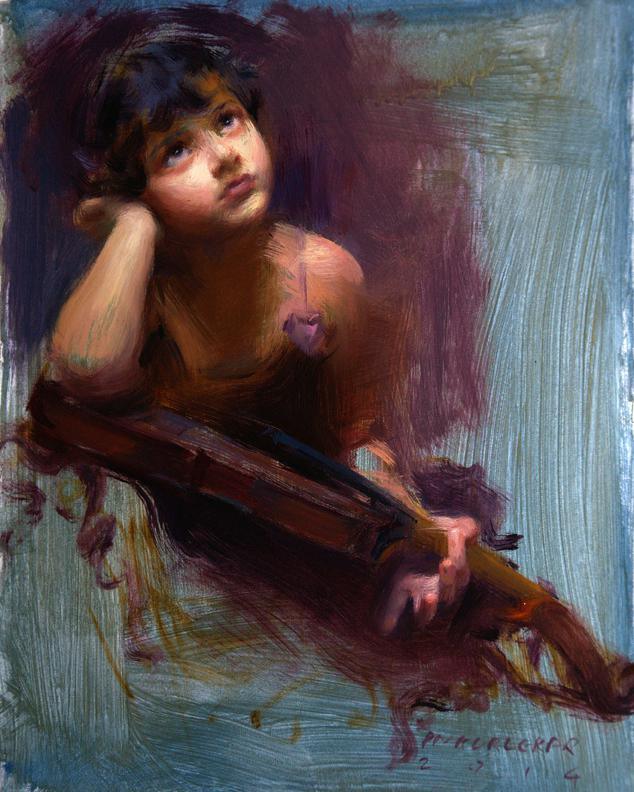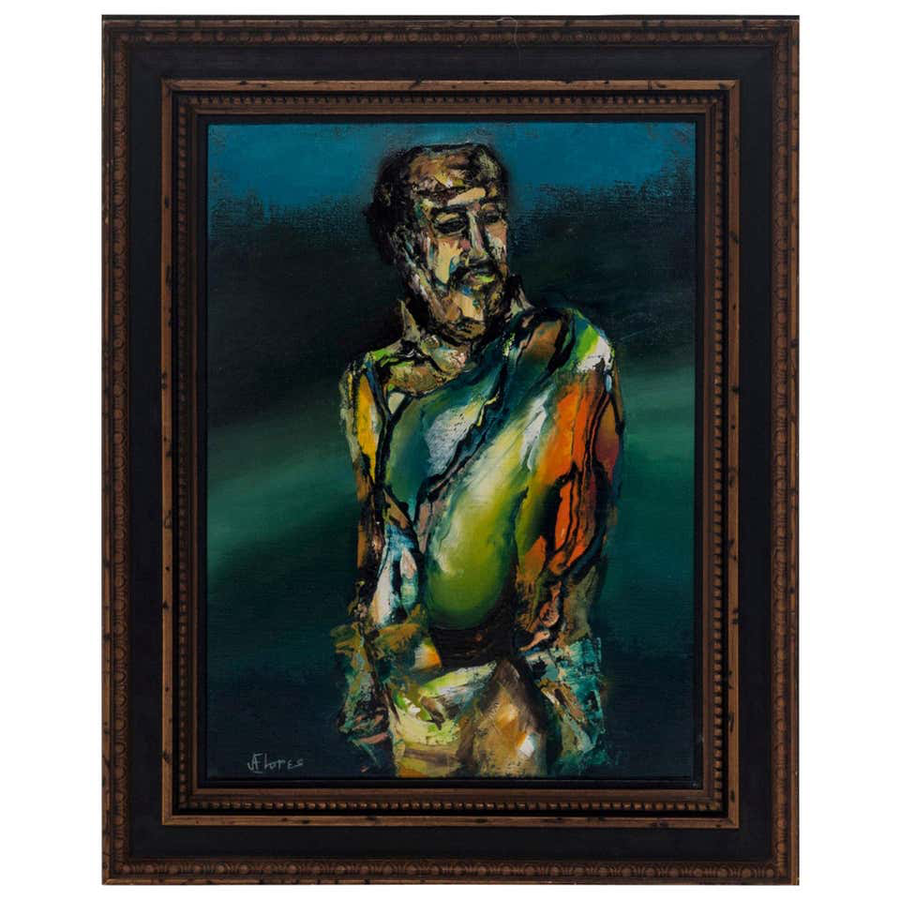How Figurative Oil Painting Transforms Typical Artistic Expression
How Figurative Oil Painting Transforms Typical Artistic Expression
Blog Article
The Development of Figurative Oil Paint: Recognizing Its Historical Importance and Modern Interpretations
The evolution of metaphorical oil paint works as an engaging lens where to check out the interplay in between creative expression and historical context. From the thorough naturalism of the Renaissance to the emotive power of the Baroque, each era has actually contributed layers of definition and method to this ageless medium. Contemporary musicians, attracting from this rich heritage, are currently reinterpreting the human figure in manner ins which test traditional stories. As we explore these changes, one must take into consideration exactly how the dialogue in between present and previous informs not just creative practice however also social reflections in a significantly complex globe.
Origins of Metaphorical Oil Paint
The origins of metaphorical oil paint can be traced back to the early Renaissance in Europe, specifically in the 15th century. This period noted a significant departure from the stiff kinds and flat depictions characteristic of middle ages art. Musicians started to explore naturalism, highlighting the human number and its psychological expression. The development of oil paint permitted better deepness of shade and detail, enhancing the realistic look and vibrancy of their job.

In this transformative era, figures were often portrayed within contextually rich settings, showcasing not just their physical qualities but additionally their psychological states. Leaders such as Jan van Eyck and Titian harnessed the tool's flexibility, using layering strategies to achieve luminance and appearance. This technology promoted the portrayal of elaborate fabrics and the nuances of skin tones, contributing to the development of portraiture and narrative scenes.
Furthermore, the Renaissance focus on humanism promoted an appreciation for individualism, which consequently influenced musicians to create even more dynamic and relatable numbers - figurative oil painting. As a result, metaphorical oil painting arised as a powerful lorry for storytelling and psychological interaction, laying the groundwork for future creative movements and styles
Trick Historical Motions
Substantial historical activities have formed the evolution of metaphorical oil paint, each contributing one-of-a-kind viewpoints and methods that broadened the tool's possibilities. The Renaissance marked a zero hour, stressing realism and the human type, with musicians like Leonardo da Vinci and Michelangelo pushing the limits of physiological accuracy and point of view. Following this, the Baroque era brought remarkable contrasts of light and darkness, exhibited by Caravaggio, who infused spiritual themes with intense emotionality.
The 19th century presented Romanticism and Realism, where musicians such as Delacroix and Courbet tested classical suitables, concentrating on specific expression and everyday life. The development of Impressionism better transformed the medium by stressing the effects of light and color, bring about a separation from traditional representation.
In the early 20th century, motions like Expressionism and Cubism redefined metaphorical paint via abstraction and the exploration of emotional deepness. Each of these activities not just reflected the societal changes of their times however likewise prepared for modern analyses. The interaction in between these historic motions has actually produced an abundant tapestry of ideologies and designs, affecting modern-day musicians in their pursuit of recording the human experience on canvas.
Methods and Materials Evolution

Throughout the Baroque period, techniques such as chiaroscuro and sfumato emerged, enhancing the psychological resonance of metaphorical compositions. Musicians began to trying out glazes and impasto, adjusting structure and luminance. By the 19th century, advancements like making use of pre-mixed paints in tubes changed ease of access, permitting artists to repaint en plein air and catch the short lived effects of light.
The 20th century observed the introduction of artificial pigments and tools, which expanded the scheme and altered the consistency of oil paints. The expedition of new application methods, such as combination blades and brushes of varying tightness, more diversified creative expression. Jointly, these developments show the advancing relationship between materials, methods, and the imaginative vision inherent in figurative oil painting.

Contemporary Interpretations
Contemporary interpretations of figurative oil painting reflect a dynamic dialogue between tradition and innovation, where artists challenge established norms and explore varied motifs. This advancement shows up in numerous means, as modern artists blend classical techniques with modern-day principles, often addressing social, political, and individual have a peek at these guys stories.
Lots of professionals draw inspiration from historical jobs, yet they instill their pieces with contemporary viewpoints, making use of the human type as a car for commentary on culture, identification, and sex. Artists progressively try out abstraction, distortion, and multimedias, which enables a wider interpretation of the number visit our website and its context.
Additionally, using dazzling shade palettes and unusual structures frequently offers to interrupt traditional watching experiences, provoking critical involvement from audiences. This change in focus expands beyond appearances; it shows an expanding understanding of the complexities of human experience in an interconnected world.
As metaphorical oil painting proceeds to develop, it continues to be an important tool for exploring the subtleties of contemporary life, symbolizing both a regard for heritage and a commitment to progressive idea. The result is a rich tapestry of expression that reverberates with the complexities of the contemporary human problem.
Influence On Modern Art
The effect of metaphorical oil paint on modern art is profound, as it has continually influenced a myriad of imaginative activities and practices throughout the 20th and 21st centuries. From Expressionism to Surrealism and beyond, the exploration of the human figure has actually continued to be a main motif, allowing artists to convey complicated emotions and stories. This focus on metaphorical depiction has actually led to a re-examination of traditional techniques, resulting in ingenious methods that blend realism with abstraction.
Additionally, modern artists have accepted metaphorical oil paint as a way to attend to political and social problems, using the medium to challenge understandings of culture, sex, and identity. The revival of interest in metaphorical work in current years reflects a wishing for connection in an increasingly digital globe, where human experience and feeling are vital.
Furthermore, the dialogue in between metaphorical oil painting and contemporary art is noticeable in the works of artists such as Kehinde Wiley and Jenny Saville, who draw on historic referrals while infusing their pieces with modern significance. Eventually, figurative oil paint continues to shape and redefine modern-day artistic expression, emphasizing its enduring relevance in the art globe.
Verdict
The advancement of figurative oil painting highlights its historic relevance and flexibility across numerous creative motions. Eventually, metaphorical oil paint stays an important medium for exploring the human experience, reverberating greatly in today's digital landscape.
The advancement of figurative oil painting serves as an engaging lens via which to check out the interaction in between imaginative read this post here expression and historic context.Considerable historic movements have actually shaped the evolution of figurative oil painting, each contributing distinct ideologies and techniques that broadened the medium's possibilities.As historic activities shaped the trajectory of metaphorical oil painting, the methods and products employed by artists have actually additionally gone through significant changes. figurative oil painting.The impact of metaphorical oil paint on contemporary art is extensive, as it has continuously motivated a myriad of artistic activities and methods throughout the 20th and 21st centuries.The evolution of metaphorical oil paint highlights its historical relevance and versatility throughout different creative activities
Report this page